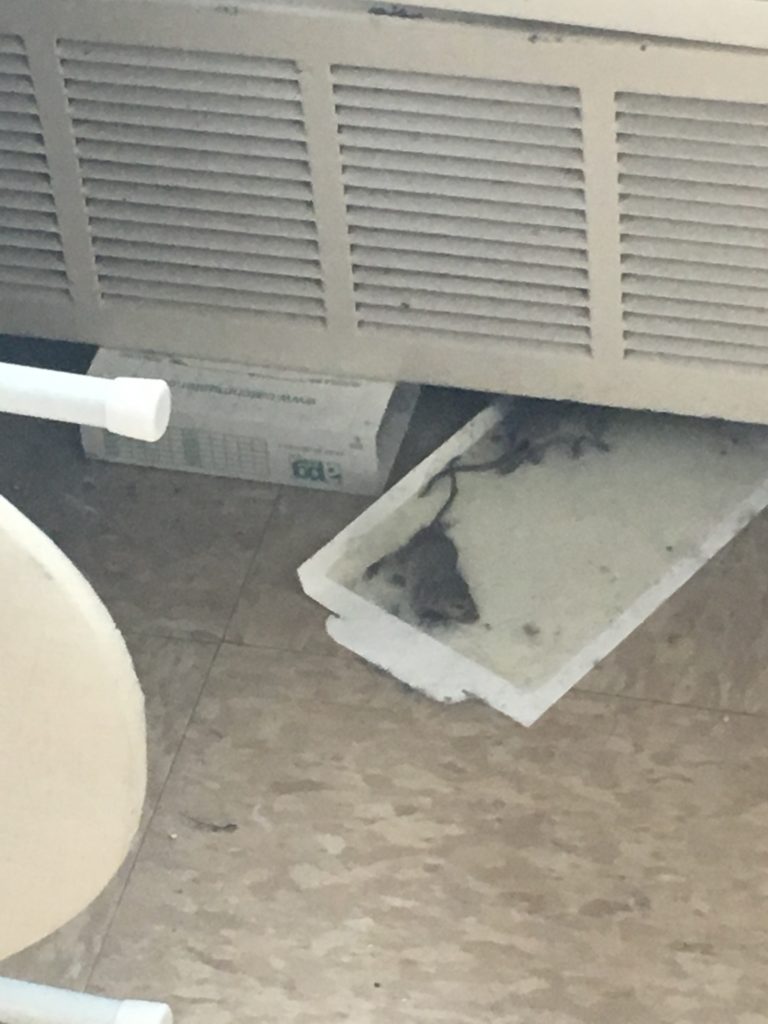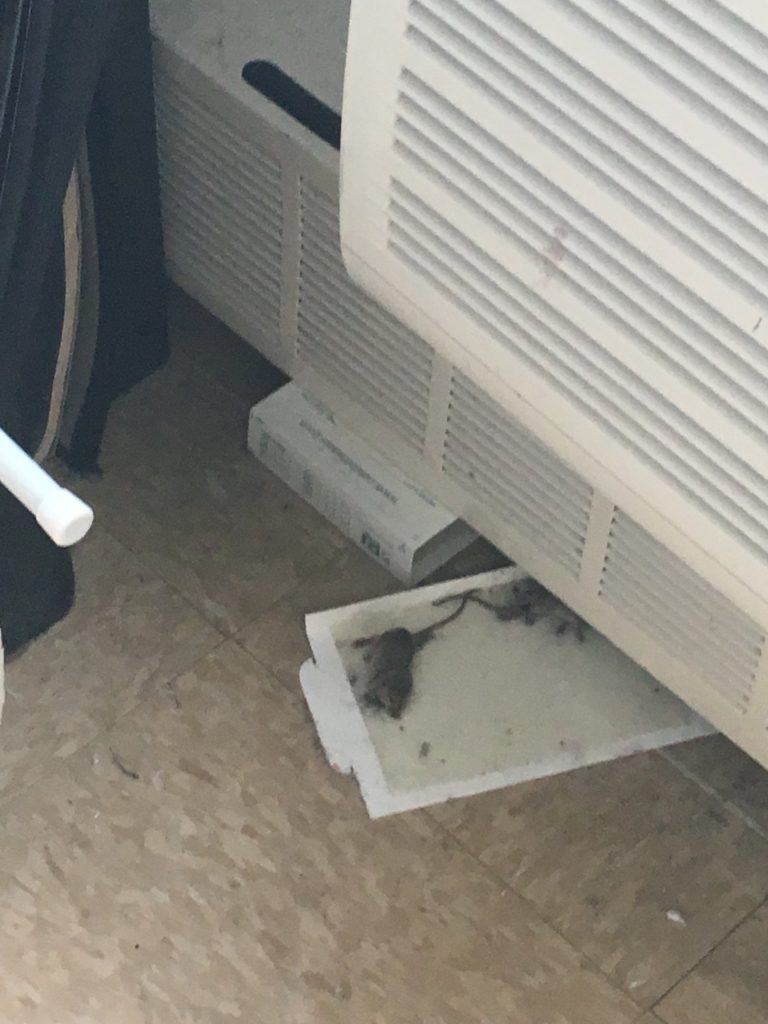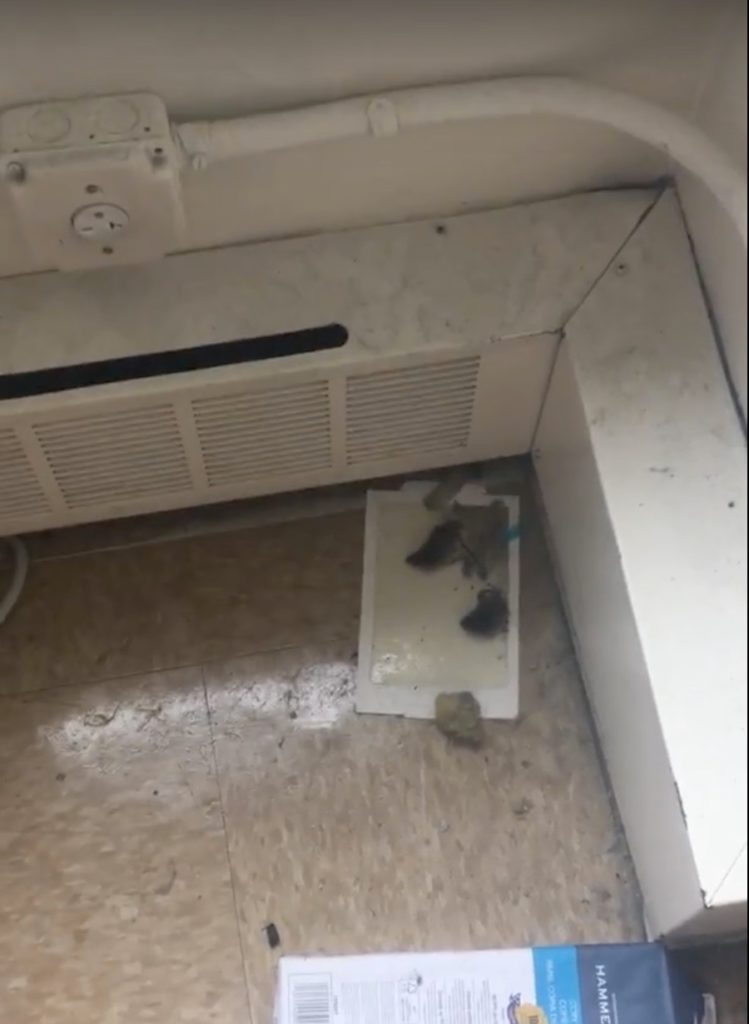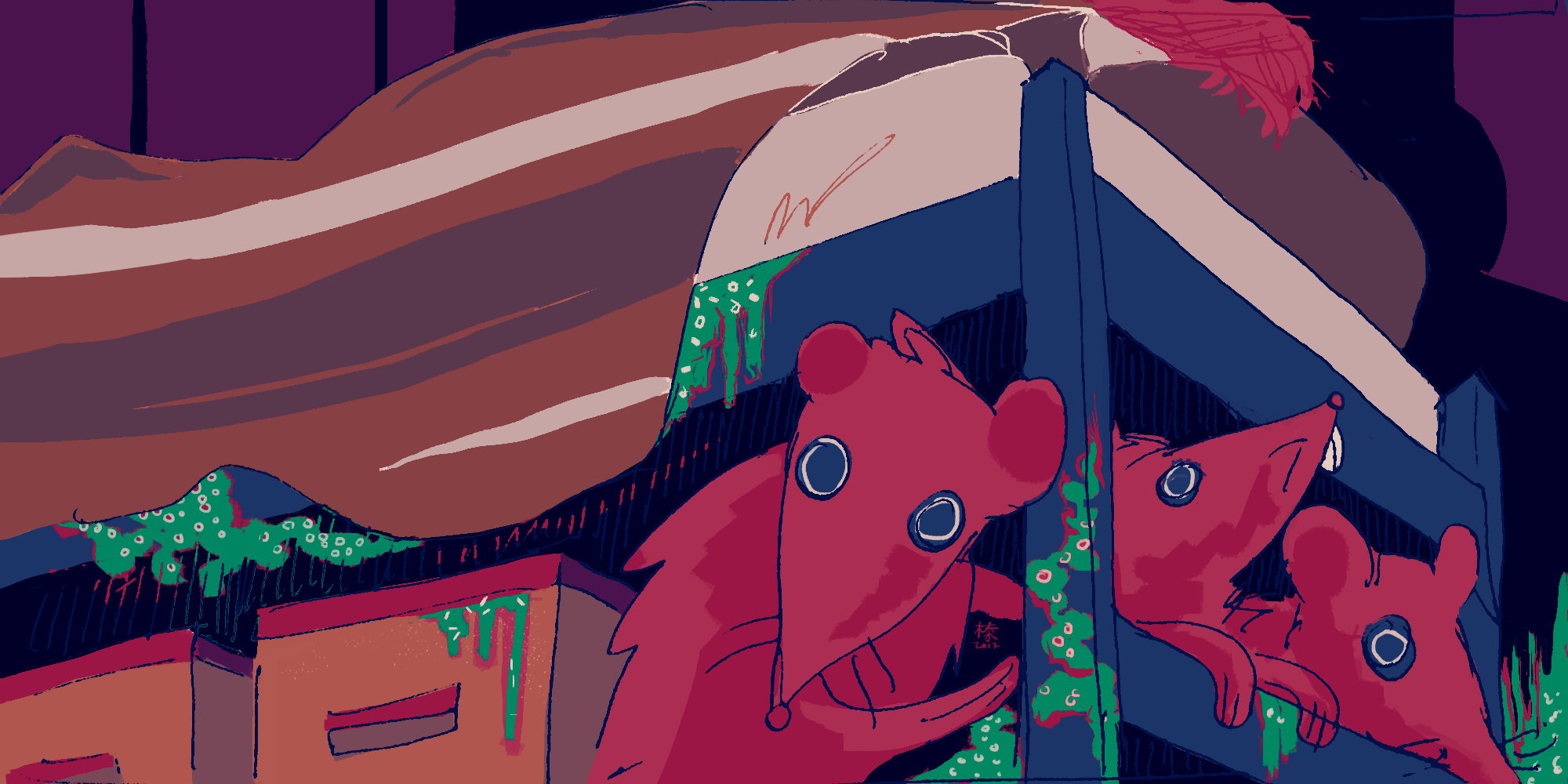Early in the spring semester, Quinn Charles, a freshman resident at Stuyvesant Park Residence, found herself living in constant discomfort. Whenever she was at home in her dorm, she felt that she couldn’t escape the scampering rodents that she heard almost every night, under her bed and in the walls.
“I was too scared to even touch my feet to the ground. All night, I could hear mice scattering around,” she said. “At one point, it got so bad that I thought I had to leave and go stay with a friend.” Since then, Charles said she has “learned to live with it, but it doesn’t get any easier. ”
 While this may seem like an extreme case, this situation isn’t at all out of the ordinary at Stuy.
While this may seem like an extreme case, this situation isn’t at all out of the ordinary at Stuy.
A popular dorm choice for freshmen at The New School, Stuyvesant Park Residence, colloquially referred to as “Stuy,” is located on 15th Street between 1st and 2nd Avenues. It’s The New School’s largest housing option, and its $16,000 to $24,000 per-year price tag makes it one of the country’s most expensive dorms. The New School has been repeatedly ranked as having the most expensive dorms in the US, including as recently as last May. The dorm is across the street from Stuyvesant Park and just footsteps away from countless dining and shopping opportunities. It may seem to be perfect for young college kids moving to the city for the first time. “The check-ins, the floor meetings, the relationships that you can build — I think those are some of the core reasons why folks are excited about it,” said Marsha Dawson, who is the Associate Director of Residential Education at The New School and was the previous area coordinator for Stuy.
But upon moving in, living at Stuy offers its freshman residents a reality check. Before long, many residents confront a range of issues, including mold, discolored water, and what some have characterized as rodent infestations.
Alayna Rickard, a Parsons freshman majoring in Strategic Design and Management and a current Stuy resident, didn’t know what to expect when she moved into the dorm in the fall. “I initially kept my expectations low before moving in. There weren’t really any clear pictures online of what the rooms really looked like,” she said.

When move-in day finally came, Rickard was less than impressed, despite her low expectations. “It didn’t appear that they had really cleaned before we came,” she said. She initially assumed that she would be able to “fix it up.” “Fixing it up” turned into having to bleach the bathtub due to mold and black tiles as well as installing water filters, due to an issue some students have had with discolored water.
The discolored water has been attributed in the past to “air pressure in the pipes,” and Dawson emphasized that the water in the building is completely safe. “It’s been tested; we wouldn’t put you in a space and give you unhealthy water,” she said.
When Isabella Diesfeld, a freshman at Parsons, first saw her room, her first impression was that it was “a bit bland, but easy to make into a homey space.” But she soon discovered that she shared her home with mice and that her bathroom was a breeding ground for mold. “The shower is slimey. That’s not normal,” she said.
According to the NYC rat information portal, a resource of the city’s health department, Stuyvesant Park Residence passed its latest health department rat inspection on January 26th.
The dorm did not pass the city’s rat inspection twice in 2010, according to the database. Both of those inspections cited “problem conditions.” Since then, all four subsequent inspections — in 2011, 2012, 2016 and this past January — have passed.
However, residents say that rodent life is still very present. Charles laughed at the fact that the dorm passed an inspection, noting that she “would definitely say that Stuy has a mouse infestation.”
“My roommate isn’t even sleeping here right now because we are in the process of exterminating,” said Jaye-Elizabeth Johnson, a first-year Parsons student and Stuy resident. “The mice leave droppings everywhere, and it’s not my responsibility to clean up after mice because I did not sign up for this.”
“I’m shocked that they passed [the latest inspection],” Diesfeld said. “It’s not even a question that Stuy is infested with rodents. There’s a bloody mouse in a trap under our fridge right now.”
Johnson doesn’t doubt that the building passed the city’s inspection, but she emphasized that the rodent problem is nonetheless very real for some students. “I’m sure they passed the inspection,” she said. “That’s believable because not everyone has pests. But for those who deal with this, it’s so frustrating.”
“It seems like pest control is really low on their list of priorities, which is really important in keeping residents feeling comfortable,” she said. “I pay a lot for the security and ease of living on campus, so I think it’s unfair that finding vermin is a concern.”
“Mice happen,” Dawson said when asked about the issue with rodents that plagues many Stuy residents. She added that the dorm works closely with the facilities department and with Abalon, an exterminating company. Every time a student reports mice, Dawson said that Abalon is called to exterminate “within minutes or hours,” and facilities will place traps and “assess the situation.” According to Dawson, traps have been placed throughout the exterior of the building to ensure that mice won’t come in from the outside.
Dawson and the school’s communications office did not reply to several requests for comment on specific numbers and statistics regarding actions taken to deal with rodents.
Alissa Bayes, senior director for student and campus life, stated via email that the university’s housing department “is committed to ensuring a clean and safe space for all students upon their arrival and in day-to-day living within the residence halls. We work closely with Facilities to address issues that arise, have very specific protocols for rodent and insect issues, and strive to resolve any issues that may develop as quickly as possible.”
Bayes added that in May and August of each year, a professional cleaning company is contracted “to clean the residence halls, top to bottom, including all rooms, suites, bathrooms, hallways, and common areas.” Reiterating Dawson’s point, Bayes said the dorm works with exterminators, and the facilities department identifies and closes “any holes that may exist near the wiring for appliances” through which pests can enter individual dorm suites.
![]()

Dorm administrators encourage students to speak to their RAs and send in work orders to deal with problems in the building, which is something four students interviewed for this article said they had done.
Various residents said that they expect more for the amount that they are paying. “The tuition money of residents is not being distributed wisely,” Diesfeld said. “[Stuy residents] are quite vocal about our complaints, but no one seems to take any of it into consideration. I understand the circumstances that come with living in a big city, but for what we’re paying we should be getting a more sanitary living space.”
Dawson advises students with qualms to take their complaints a step further and not to stay quiet, citing “a number of resources to get answers” available to students, such as hall council, going to their floor RAs, and making direct complaint with the area coordinator for Stuy. While Dawson acknowledged that “they’re not always accessible and seem very intimidating,” it is necessary for students to vocalize their issues at these meetings.
“At the end of the day, we’re here for the students,” she said. “You pay so much money to go here — if there’s something that we as a department can be doing better, we won’t get better without that feedback. We won’t take it personally, we won’t get upset. Tell us.”
Header by Hazel Ng, photos/videos by Natalie Cahill







